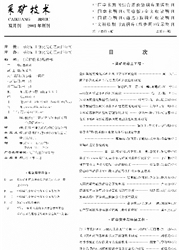

 中文摘要:
中文摘要:
文中将风廓线雷达和无线电-声探测系统探测资料用于边界层晴空热对流探测研究。结合探测事例分析了晴空热对流的演变过程和热对流对上层空气的加热效应。在热对流初期,对流高度逐渐抬高,伴有较强上升速度的热对流泡逐渐升高的现象。在热对流旺盛期,热泡合并现象明显,不论是上升还是下沉气流瞬时速度都可以超过1 m/s,可以在约2 km的高度范围内形成一致的上升或下沉运动,并形成闭合环流、周期约1 h。在热对流消退期,对流高度逐渐降低,上升运动变得相对和缓并维持较长时间。在热对流过程中,热泡运动造成气层温度的起伏,热泡与周围温度差可以达到2—4℃。探测结果表明风廓线雷达具有很高的灵敏度,可以探测到晴空热对流泡。并且,风廓线雷达资料具有很高的时间和高度分辨率,可以精细刻画热对流泡的时空分布和演变,配合无线电-声探测系统还可以精确探测热泡温度分布及其对周围温度垂直分布的影响。通过对晴空热对流风廓线雷达探测资料的初步分析,在一定程度上拓展和加深了对热对流泡和边界层热对流运动特征的了解。借助风廓线雷达探测可有效改善低层大气探测,有利于开展低层大气动力与热力过程的数值研究,对于中尺度模式、降水预报的改进等具有重要参考作用。
 英文摘要:
英文摘要:
The phenomena of thermal bubbles and the heat convection process in the atmospheric boundary layer are studied by using the data from the Wind Profiler Radar(WPR) and Radio-acoustic Sounding System(RASS).A case of thermal bubbles observed by WPR is described and discussed.At the beginning of the heat convection,thermal bubbles associated with a stronger updraft move upward to a higher level.During the strong convective period,it is obvious that the merge of thermal bubbles occur with the vertical velocity,no matter it is upward or downward,more than 1m/s and the height of convective reached more than 2 km,as well as a closed vertical circulation of about one hour period.In the decay stage of heat convection,the height of convective is decreased,and the vertical movement is getting gentle and lasts for very long time.Thermal bubbles are able to cause fluctuation of temperature with the difference between thermal bubble and its surroundings reached 2—4℃.The analyses show that WPR is very sensitive to the echo of thermal bubbles.And the high temporal and altitudinal resolutions of WPR make the fine description of the distribution and development of thermal bubbles become possible,and in addition,combining RASS data can also obtain accurately the temperature distribution and its impact on the vertical profiles of surrouding temperature. The preliminary analyses of WPR data,in a certain extent,can help us to further understand the nature of thermal bubbles and the motion characteristics of heat convection in the atmospheric boundary layer.WPR provides an efficient approach to improve the observations of the lower atmosphere,which is benefitial to numerical study of dynamic and thermal processes as well as to improving meso-scale model and precipitation forecast.
 同期刊论文项目
同期刊论文项目
 同项目期刊论文
同项目期刊论文
 期刊信息
期刊信息
